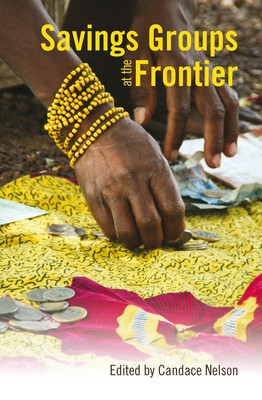
- We will send in 10–14 business days.
- Publisher: Practical Action Publishing
- ISBN-10: 1853397776
- ISBN-13: 9781853397776
- Format: 15.2 x 23.1 x 1 cm, minkšti viršeliai
- Language: English
- SAVE -10% with code: EXTRA
Savings Groups at the Frontier (e-book) (used book) | bookbook.eu
Reviews
Description
Savings Groups reach those rarely served by mainstream financial institutions.Maximum transparency, a profitable structure for saving, access to small loans and an annual lump sum of capital are the hallmarks of the savings group methodology. The outcome: empowered groups, made up mostly of women, who manage themselves as tiny financial institutions. Today there are savings groups in 60 countries with more than 6 million members, the result of initiatives carried out by dozens of international and local NGOs. What are the costs, required inputs, and anticipated outreach of these groups? How does replication take place? How sustainable are the groups? Is it feasible to integrate financial and non-financial services? Are linkages to the formal system desirable? What is the impact of groups on members and their households? How can performance be managed? This book addresses issues, not from the perspective of the financial institution, but in support of group members and savers who are managing their own financial services.This book is essential reading for all those concerned with extending financial services to the poor.
EXTRA 10 % discount with code: EXTRA
The promotion ends in 22d.01:01:22
The discount code is valid when purchasing from 10 €. Discounts do not stack.
- Publisher: Practical Action Publishing
- ISBN-10: 1853397776
- ISBN-13: 9781853397776
- Format: 15.2 x 23.1 x 1 cm, minkšti viršeliai
- Language: English English
Savings Groups reach those rarely served by mainstream financial institutions.Maximum transparency, a profitable structure for saving, access to small loans and an annual lump sum of capital are the hallmarks of the savings group methodology. The outcome: empowered groups, made up mostly of women, who manage themselves as tiny financial institutions. Today there are savings groups in 60 countries with more than 6 million members, the result of initiatives carried out by dozens of international and local NGOs. What are the costs, required inputs, and anticipated outreach of these groups? How does replication take place? How sustainable are the groups? Is it feasible to integrate financial and non-financial services? Are linkages to the formal system desirable? What is the impact of groups on members and their households? How can performance be managed? This book addresses issues, not from the perspective of the financial institution, but in support of group members and savers who are managing their own financial services.This book is essential reading for all those concerned with extending financial services to the poor.


Reviews